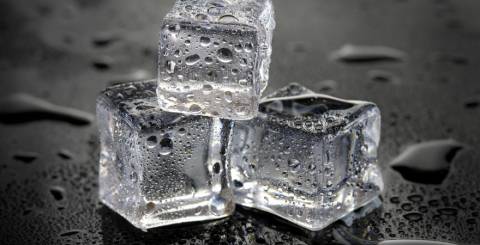Block Ice Machine: The Complete Guide for Buyers and Businesses

When you think about ice, you might imagine the small cubes in your drink or the crushed ice in a smoothie. But in the industrial world, ice often comes in much larger forms—solid, heavy blocks weighing anywhere from 5 kg to 50 kg or more. These are produced by specialized equipment like the BF Tech block ice machine, which plays a crucial role in industries that require large, slow-melting ice for storage, cooling, and transportation.
Block ice machines have existed for decades, gradually evolving from bulky, labor-intensive setups to efficient, fully automated systems. In the past, creating large ice blocks meant relying on massive saltwater brine tanks and extensive manual handling, but modern technology has made the process faster, cleaner, and more energy-efficient. Today, these machines are indispensable in seafood processing, construction cooling, event catering, and many other industrial applications.
How a Block Ice Machine Works
A block ice machine might look complicated, but its core function is simple: it freezes water into large, solid blocks. Here’s the basic process:
- Water Filling – Fresh water is poured into molds or ice cans.
- Freezing Cycle – The machine’s refrigeration system cools the water either directly (by freezing the molds) or indirectly (by placing molds in a brine tank).
- Harvesting – Once frozen, the ice blocks are released from the molds, often with a defrosting system that uses warm water or hot gas.
- Storage – The blocks are stored in cold rooms or insulated containers until needed.
The main components include:
● Compressor – Pumps refrigerant to produce cooling.
● Evaporator – Transfers cold to the water or brine.
● Brine Tank (for older models) – Holds a saltwater mixture to help freeze the ice.
● Molds – Shape the ice into specific block sizes.
Modern machines often skip the brine system and use direct cooling, making the process more hygienic and environmentally friendly.
Key Benefits of Using a Block Ice Machine
One of the main advantages of a block ice machine is its ability to produce large, dense ice blocks that melt much slower than smaller ice types, ensuring prolonged cooling in various applications. These solid blocks are highly durable, meaning they can be transported, stacked, and handled without easily breaking apart. Businesses benefit from their versatility, as block ice is used in industries ranging from seafood preservation and concrete cooling to event decoration and logistics.
Because the ice retains cold temperatures for extended periods, it’s ideal for situations where consistent cooling is required during long transportation or storage without constant refrigeration. Modern block ice machines are designed to operate efficiently, producing high volumes of ice with relatively low energy consumption. They also allow customization in block sizes, catering to different industry needs. Furthermore, the slow-melting nature of block ice reduces water waste compared to smaller ice forms. Overall, these machines provide a reliable, cost-effective, and practical solution for commercial and industrial cooling demands.
Applications of Block Ice Machines
Block ice machines are indispensable in multiple industries:
● Seafood & Meat Processing – Large ice blocks keep fish and meat fresh during transport and storage without soaking the product in excess water.
● Concrete Cooling – In hot climates, adding block ice to concrete mix lowers the temperature, preventing cracks and improving strength.
● Event Catering & Sculptures – Event planners use block ice for decorative sculptures, ice bars, and large cooling stations.
● Logistics & Shipping – Refrigerated trucks and containers often use block ice as backup cooling in case of power outages.
Interestingly, block ice is also popular in some rural areas where electricity is unreliable. Ice blocks are delivered to markets and homes to preserve perishable goods without constant refrigeration.
Choosing the Right Block Ice Machine
Selecting the right block ice machine starts with understanding your daily production needs, as models vary from small units making a few hundred kilograms to massive systems producing several tons of ice per day. The size of the ice blocks is another key factor, with options ranging from 5 kg for easy handling to 50 kg or more for maximum cooling duration. Energy efficiency should also be considered, since modern machines with improved insulation and smart controls can significantly reduce operating costs over time.
Space availability plays a role too, as some units require large, well-ventilated installation areas, while others are compact and mobile. If hygiene is a priority, especially in food-related industries, direct cooling machines are preferable due to their cleaner, chemical-free production process. Budget planning is essential, taking into account not only the initial purchase price but also long-term expenses like maintenance, electricity, and water consumption. It’s also wise to consider the reliability of the manufacturer and the availability of spare parts or after-sales service. By weighing all these factors carefully, you can choose a block ice machine that perfectly matches your operational, financial, and industry-specific needs.
Common Problems and Troubleshooting
Even the best block ice machines can face issues. Knowing how to troubleshoot saves time and keeps production running.
1. Slow Ice Production
● Possible Causes: Dirty evaporators, low refrigerant, poor ventilation.
● Solution: Clean components, check refrigerant, improve airflow around the unit.
2. Ice Sticking to Molds
● Possible Causes: Insufficient defrost cycle or damaged mold coating.
● Solution: Adjust defrost settings or replace worn molds.
3. Unusual Noises
● Possible Causes: Loose components, worn bearings, or fan motor problems.
● Solution: Inspect and tighten parts, lubricate moving components, replace faulty motors.
4. Ice Quality Issues
● Possible Causes: Impure water supply or scale buildup.
● Solution: Install a water filter and perform regular descaling.
Regular inspections prevent small issues from becoming production-halting breakdowns.
Conclusion
A block ice machine is more than just an ice maker—it’s a cornerstone of many industries, from seafood preservation to event planning. Choosing the right model means balancing production needs, energy efficiency, and maintenance requirements. With proper care, these machines can serve reliably for decades, delivering consistent, long-lasting ice blocks whenever you need them.
Similar Articles
Learn how garlic drives the food processing industry, from raw bulbs to high value-added products with major economic and culinary impact.
Indulge in fine dining at home or events with a luxury private chef, offering tailored gourmet menus, premium ingredients, and flawless service.
Upgrade your outdoor kitchen with these 10 must-have culinary tools—from griddles to thermometers—for flawless, flavorful alfresco cooking every time.
A great dining experience isn’t just about the food—it’s also about the drinks that complement each dish.
Discover the world’s largest black caviar producers, from Europe to China, and learn how to choose premium, sustainable sturgeon roe for a luxurious culinary experience.
Who says you need deep pockets to enjoy mouth-watering meals? Eating like royalty doesn’t mean booking fancy restaurants or spending a fortune on gourmet ingredients
Learn how modern cafeterias balance taste and nutrition with fresh, flavorful, and healthy meal options tailored to diverse dietary needs and employee well-being.
Learn how digital menu boards revolutionize restaurants with dynamic content, eco-friendly updates, enhanced customer experiences, and streamlined operations.
Discover the best foods to eat and avoid with new dentures for comfort, durability, and a healthy smile. Tips for a smooth dietary transition included!









